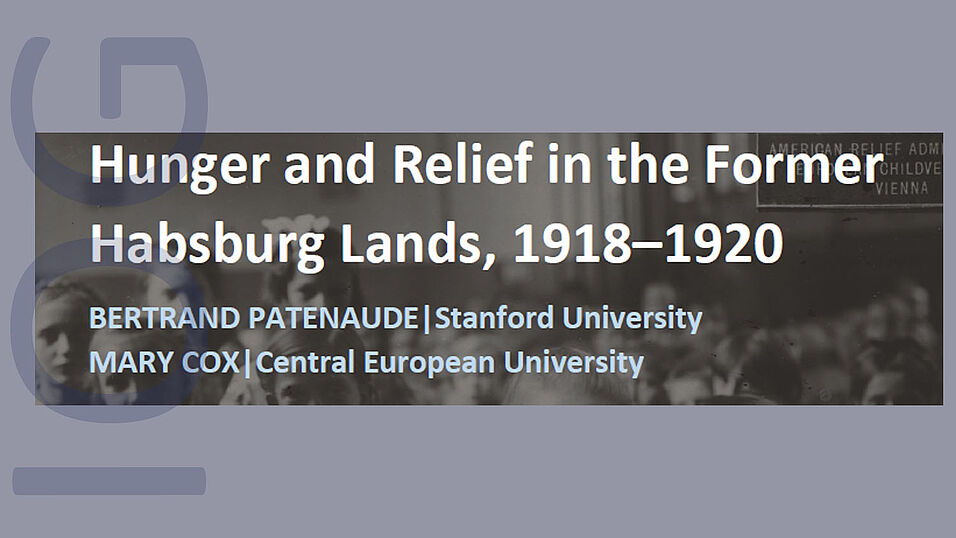Friday 12 Apr. 2024, 14:30h
Hörsaal des Instituts für Osteuropäische Geschichte
Registration
The story of America's economic intervention in East-Central Europe at the end of the First World War is a forgotten epic. American aid workers and technical experts distributed food supplies while helping to restore communications, revitalize railroads, revive coal production, restore traffic on the Danube River, and facilitate regional trade and cooperation. They operated in a region rife with mutual suspicion and bitter rivalries as the Austro-Hungarian Empire's dissolution led to the birth of new states Austria, Hungary, and Czechoslovakia, the resurrection of independent Poland, the enlargement of Serbia as part of a new Yugoslavia, and the emergence of a Romania greatly enhanced territorially at the expense of Hungary. The aim of America's "second intervention" in Europe was to prevent these former Habsburg lands from sliding into anarchy and to keep Bolshevism contained inside Soviet Russia.
Two speakers whose research has focused on American relief operations in Europe after the Great War will examine this fascinating historical chapter, offering both an overview of the U.S. intervention and a close-up look at the effects of food relief in the city of Vienna.
Organizer: Wolfgang Mueller

